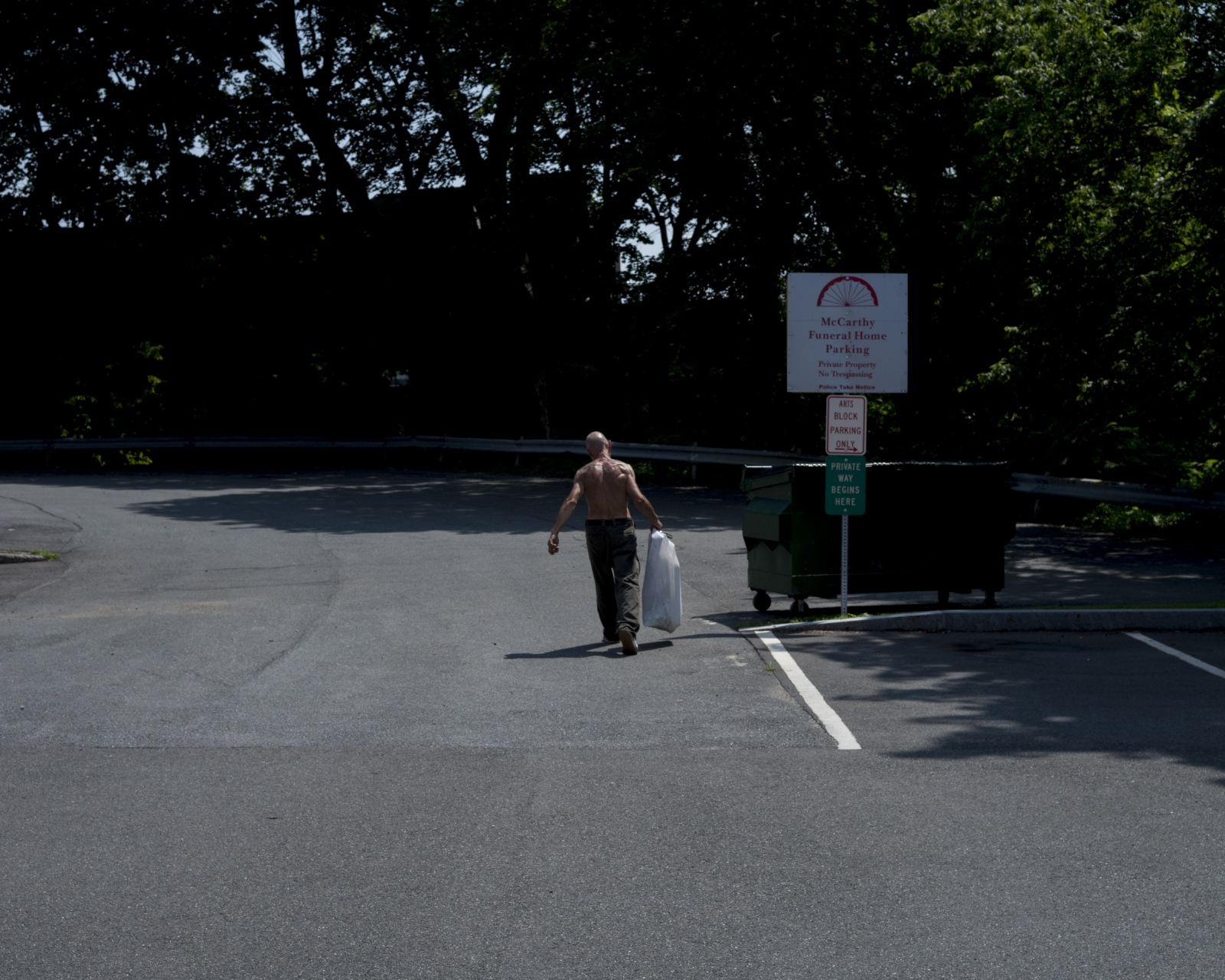Towns in rural England used to leave an open area of pasture as a grazing field for livestock. The tradition found its way to Massachusetts in the 1600's. The Common was placed at the towns' center near the church and meeting house. Locating The Common outside the Meeting House shifted its intended use from livestock to politics and religion and the town common became a place for assembly. Commons throughout New England now look a lot like city parks, sharing similar attributes: mowed grass, monuments and benches. However, commons are public land, not city owned and therefore are not under the same by-laws. City parks close at a prescribed time, sidewalks are subject to loitering laws, but a common does not follow those ordinances.
Greenfield is the seat of Franklin County. Located at the intersection of Route 2 and Interstate-91. The town is unremarkable if you've ever travelled through an old mill town. The residential side streets call to mind Mayberry; small houses, nothing too fancy, homey in their humbleness. The residue of industry still lingers on repainted facades, and the loss of prosperity hangs over the town without bearing down upon it. The biggest factory was sold overseas in the 50's and Greenfield couldn’t regain its footing.
The social dichotomy on Main St. is notable however. Greenfield is 20 minutes north of the 5 colleges in Hampshire county and an air of liberalism has wafted up the highway to Greenfield. Organic produce, yoga and a subtle self-righteousness are the standard, standing alongside or more likely across the street from people chain smoking, drinking 24oz "Natty Daddy's" in paper bags, nodding off on the benches or asking for change between the food co-op and Kings Gym.
This is not a new sight.
But Drugs and alcohol are not the only factors that led people to The Common.
I began this project in early July a few days after the local newspaper started to run stories about the people living there. After 3 years on the streets, being roused at 1 in the morning with the threat of arrest, and a long waitlist at the local shelters, Madelynn Malloy went to the library and researched the loitering and trespassing by-laws in Greenfield, Massachusetts. She learned that the city cannot impose trespassing laws on the town common.
The articles in the paper were empty, omitting names and reducing people to a type. Also missing were the individual stories of how they arrived at a need for this community.
I recorded their stories, prompting with, "How did you get here?" for some, it was drugs or booze that led them to their current situation. For some, mental health. Many have an income, either from jobs or from government disability or veteran pensions. The problem with these pay checks is that it is never enough to afford the cost of housing.
Bill works as a dishwasher at Applebee’s, making the state minimum. After taking care of basic needs for him and his partner, Amy, they are left with a fraction of the cost of first, last and security for an apartment. These stories, I found, were the running narrative on The Common.
Over the course of weeks, the occupation became the event of the summer in the otherwise sleepy city of 17,000. Most days a parade of cars pulled up bringing, toiletries or ice or non-GMO raw corn, while others would speed by laying on their horns at four in the morning, throwing job applications and yelling "Get a Job".
The mayor (whose office looks out on The Common) spent his days playing politics, trying to figure out ways to remove the homeless without offending his liberal voter base. And the cops, perhaps happy to not have to be the villains, began telling every person sleeping in a storefront or loitering on the sidewalk, that it was illegal to be on the street, but they could go to The Common.
The tents went from two or three to fifteen in a couple days. 20-30 people living on a 100ft by 30ft patch of grass.
At the end of August, It ended almost as quietly as it began. The health department stepped in, leaving the mayors hands clean. And when the health departments hard vacate date was ignored, the town waived a permit for a "Harvest Dinner" in the Homeless' face (A community meal meant to feed the less fortunate). Before the end of summer, The Town Common was roped off for grass reseeding.
It should be noted, that these people were not just sent out into the wild. There was an effort to shelter as many as possible. Some were sent to detox and others to a facility in upstate New York. Some got off the shelter waitlist while others refused the help, heading back into the woods with their tents.
The the benches are crowded again, almost as if the summer never happened.
The town clumsily but effectively swept this under the rug and was able to return to the status quo without much fanfare.
And then there is me. I grew up here. As I mentioned, this problem is nothing new. I have spent the better part of my life here pretending that my liberal utopia, is as perfect as ever, and any blemishes can just be blended into the landscape. Whether the occupancy of The Common was an act of civil disobedience or just a necessity, it was made clear that there is a flaw in the system.
































